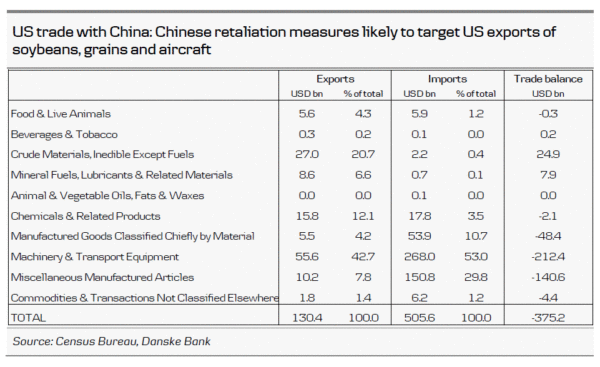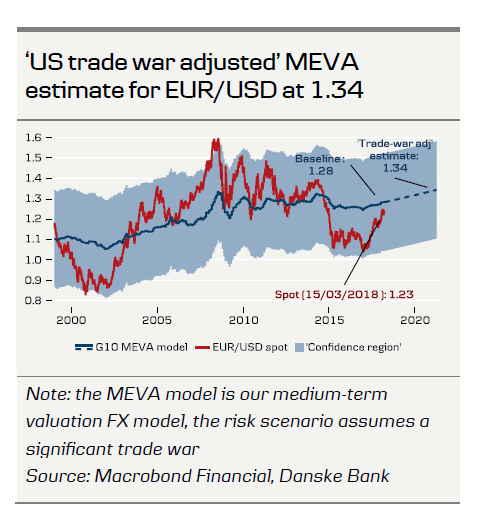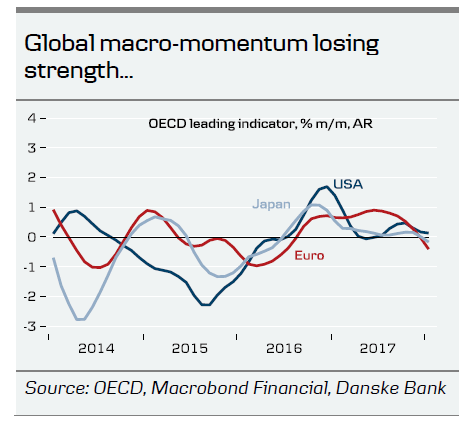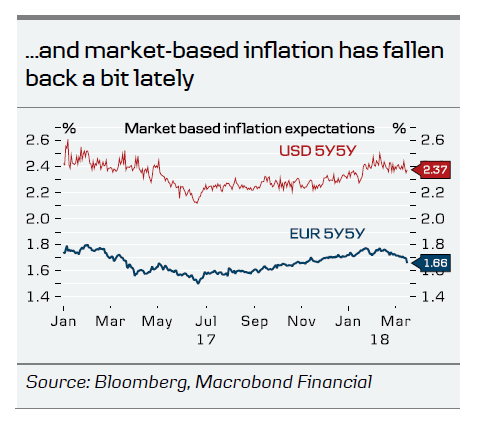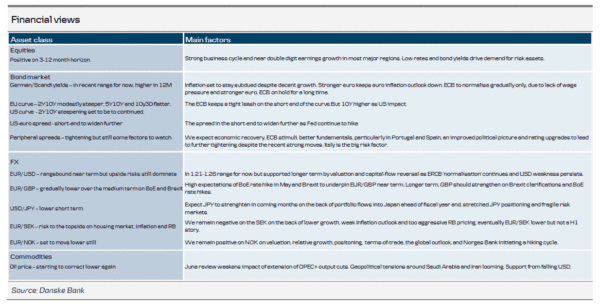Trump administration takes further steps against globalisation
This week saw a further step towards US protectionism, eyeing China in particular. After last week, when Donald Trump’s administration imposed tariffs on the import of steel and aluminium, the administration this week blocked Broadcom’s proposed takeover of Qualcomm for ‘national security’ reasons. Furthermore, White House trade adviser Peter Navarro yesterday said the US administration would consider steps against China’s alleged theft of US intellectual property over coming weeks. In addition, according to a Reuters’ story, Trump is considering imposing tariffs on USD60bn of imported goods from China, which corresponds to 13% of total imported goods from China and 2.75% of US total goods imports.
Degree of retaliation by China is key
The more protectionist stance has raised the prospects of retaliation by US trading partners. The EU is trying to persuade the US to exempt the EU from tariffs given its status as a key ally of the US (Trump tweeted this week that he wants zero-tariff trade between the EU and the US). However, given the likely targeted US trade measures against China, the bigger risk of an escalation lies with China (see more details on our take on how China could react in Research – 10 areas where China could retaliate vs. US measures, 15 March). While we expect China to retaliate against any protectionist measures implemented by Trump, we believe it would tread carefully and not strike back too hard. Among the US goods to be targeted are soybeans, grains and aircraft, which are politically sensitive for Trump. China could also sell US treasuries but we do not expect this to be the first line of defence.
USD may be a victim of increased US protectionism
In themselves, US import tariffs should (in theory) foster USD appreciation but as these, in the current setting, are part of a wider agenda to boost the US economy, protectionist measures have generally become associated with a political push for a weaker USD. Further, as risk appetite would be likely to sour because of ‘US isolation’, the USD may not exhibit the usual safe-haven properties in this context (rather the contrary perhaps). Finally, because of a wider set of US trade restrictions, we see potential for US productivity to decline over time, which would imply a real depreciation of the USD. In a risk scenario with more aggressive US protectionist measures, our medium-term model sees the EUR/USD moving to 1.34, while in our base case of limited trade fall-out, the mediumterm value for the cross is still around 1.28.
Global reflation theme losing some momentum lately but Fed still set to hike next week
Fear of global reflation was one of the key triggers of the equity sell-off in early February. The stronger-than-expected wage growth in the nonfarm payrolls set off the sell-off. However, the numbers have provided less support to the reflation theme. The nonfarm payroll number last Friday saw only a small tick up in wage inflation, while February’s strong increase was revised down. Furthermore, as announced on Tuesday, US CPI inflation for February grew at a monthly rate of 0.2%, as expected, while core inflation also fell back slightly. Market-based inflation expectations have also declined somewhat on the back of the numbers.
Less concern about reflation, and hence a more aggressive central bank stance, has prompted a rebound in risky assets. While we expect the Fed to raise the target range by 25bp to 1.50-1.75% at its meeting next week, we expect the FOMC to maintain the hiking signal at three hikes this year, albeit lifting the median dot for next year from 2.25 to 3.00 hikes in line with our view. Hence, we disagree with the markets, which price in only slightly more than one hike next year (so a total of slightly more than four hikes from now until yearend 2019 against our expectation of six hikes). However, typically, markets are more focused on the near-term outlook, so we do not expect major market volatility on the back of the Fed meeting next week.





